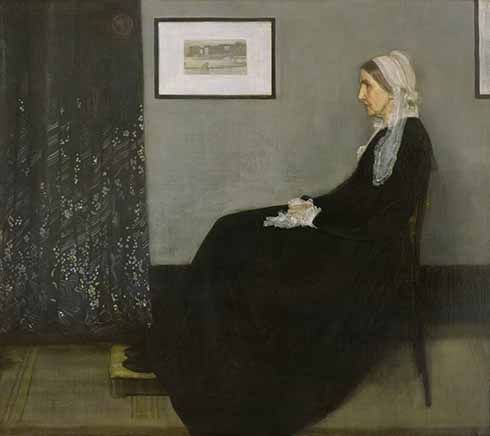 Pope Francis visited Iraq in March; the first Pope to set foot in this ancient and troubled country. One image will live long in our memories. On 6 March, the Pope visited Grand Ayatollah Ali al-Sistani in the Ayatollah’s home in Najaf. He lives in a narrow street so the arrival was not easy in any sense of the word.
Pope Francis visited Iraq in March; the first Pope to set foot in this ancient and troubled country. One image will live long in our memories. On 6 March, the Pope visited Grand Ayatollah Ali al-Sistani in the Ayatollah’s home in Najaf. He lives in a narrow street so the arrival was not easy in any sense of the word.
Pope Francis was 84 and the Ayatollah was over 90 so there was abundant experience in the meeting. Both men had seen their share of pain, made mistakes and had lived their entire lives with God at their heart.
They were both deeply respected by the communities they lead. Yet here they were, men who the world would expect to be suspicious of each other, even hostile. The Catholic community, for its part, has mourned the deaths of many people in Iraq.
REACHING OUT
The image that went around the world shows two old men leaning inwards, hopefully to better understand each other. The photograph draws the eye to their hands which seem to tell a story of their own. They both have their hands on their knees. The hands look nervous. Please God, they are reaching towards reconciliation and peace. Please God, they are ready to hold each other as brothers. But it is a little unclear. Only courageous leaders can grasp these opportunities, take these risks. Those hands are wise with age. They have learned when to hold on and when to let go, when to give and when to ask.
For some reason, they brought to mind one of the most famous pairs of hands in the whole of art.
These are the hands at the centre of a painting with a dreary official name: Arrangement in Grey and Black No 1 by James Whistler, completed in 1871. It is much better known as Portrait of the Artist’s Mother and is an instantly recognisable portrait of a figure whom the artist loved. The painting now appears everywhere from postage stamps to tea towels to jigsaw puzzles. Some people may even recall that it featured in one of the exploits of Rowan Atkinson’s Mr Bean. The hapless Mr Bean gets a job in the gallery and sneezes all over the painting, making the colours run. Of course, disaster follows disaster.
The portrait was never meant to be of the artist’s mother. Anna Whistler, who wasn’t feeling well at the time, sat in for a model who was herself unwell. Mothers are often like that, doing favours for their children even when the son is 37 and Anna was 67. Her poor health might account for the fact that observers have sometimes thought of this as a most unflattering portrait. Anna’s face certainly does look strained.
RESPECTFUL OF LOSS
The tone of the painting comes more from the choice of colours, especially the ocean of black on which Anna is perched. This is, of course, the mourning dress she had been wearing since the death of her husband 18 years earlier. She missed him terribly. James conveys her grief by representing her hands, clutching at a handkerchief, the focus of light in an area of darkness. The painting is respectful of the mother’s loss.
Anna McNeil Whistler should be remembered as more than the mother of a famous painter. She lived in several countries, including Russia, where her husband was an engineer. She buried two of her own children. She coped, in widowhood, with significant poverty and struggled to educate James. Later, she became his manager and brought his work the attention it deserved. Her biographers, Daniel Sutherland and Georgia Toutziari, describe her as ‘independent, resilient and unconventional as the heartiest pioneer woman.’
Interestingly, given the famous portrait, they say she was ‘rarely content to sit passively at home’ but was ‘constantly on the go, her bustling life brimming with excitement, crowded with important personalities, and filled with both triumphs and tragedies.
Some of this comes through the painting in a measured way.
Those hands are not ready to let go, whatever darkness lies beneath. Her eyes are looking somewhere new. She isn’t focused on the painting behind her or of the son creating her image.
As with Pope Francis, she is looking to a place beyond her immediate surroundings. She was a Christian and a woman of prayer whose stillness was not passivity.
MOVEMENT OF THE SOUL
Prayer, as St Ignatius told us, is very much about the movement of the soul. It never leaves you quite where you were at the start.
At Pentecost, we were reminded that the young will see visions, which is great. The old will dream dreams, which is even better. A vision takes us to the future. We need that. Dreams can take us both to the past and the future. That is the wisdom of mature years. It knows that life keeps moving and the Lord sits with us on every fresh journey.
Michael McGirr is the author of many books including Ideas to Save Your Life (Nov 2021). Books That Saved My Life, Snooze: the Lost art of sleep, Bypass; The story of a road and Things You Get For Free. His religious books include Finding God's Traces and Doorways into Hope and Joy at Advent and Christmas. He has much experience as a secondary teacher in the realm of Faith and Mission and currently works for Caritas Australia. He lives in Melbourne with Jenny and their three children.
Image: Arrangement in Grey and Black No. 1, James Abbott McNeill Whistler. 1871. Wikimedia.